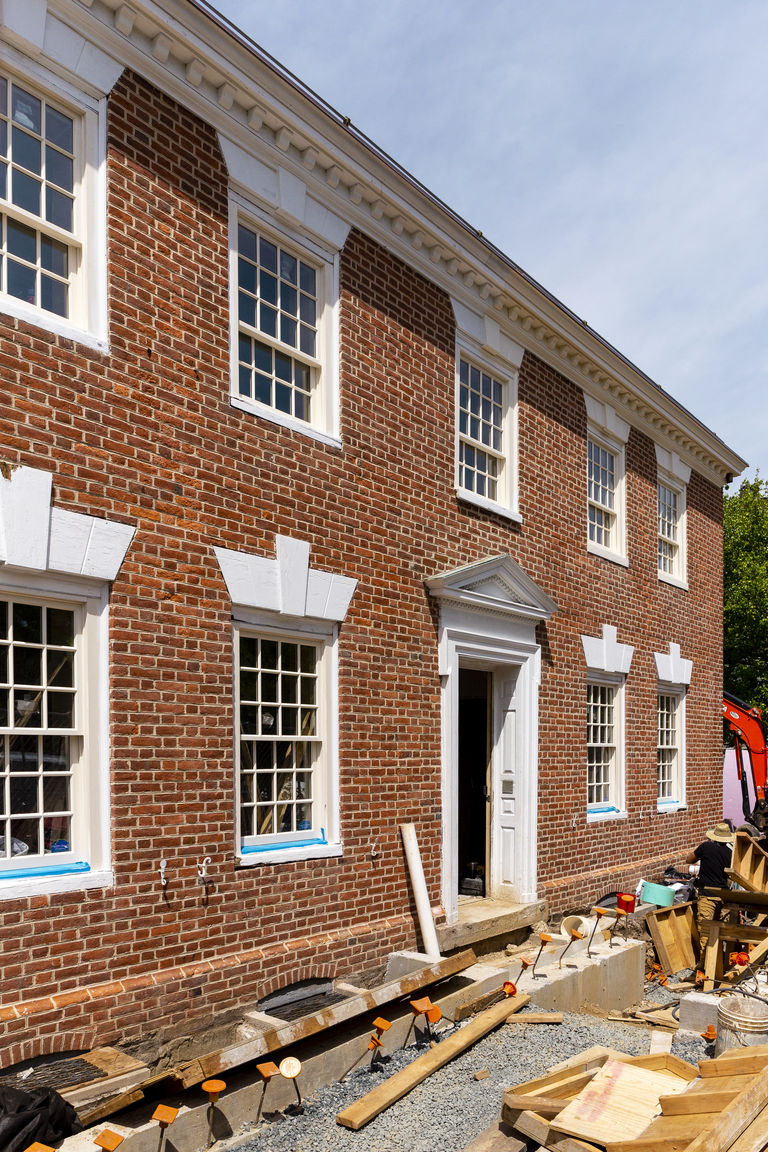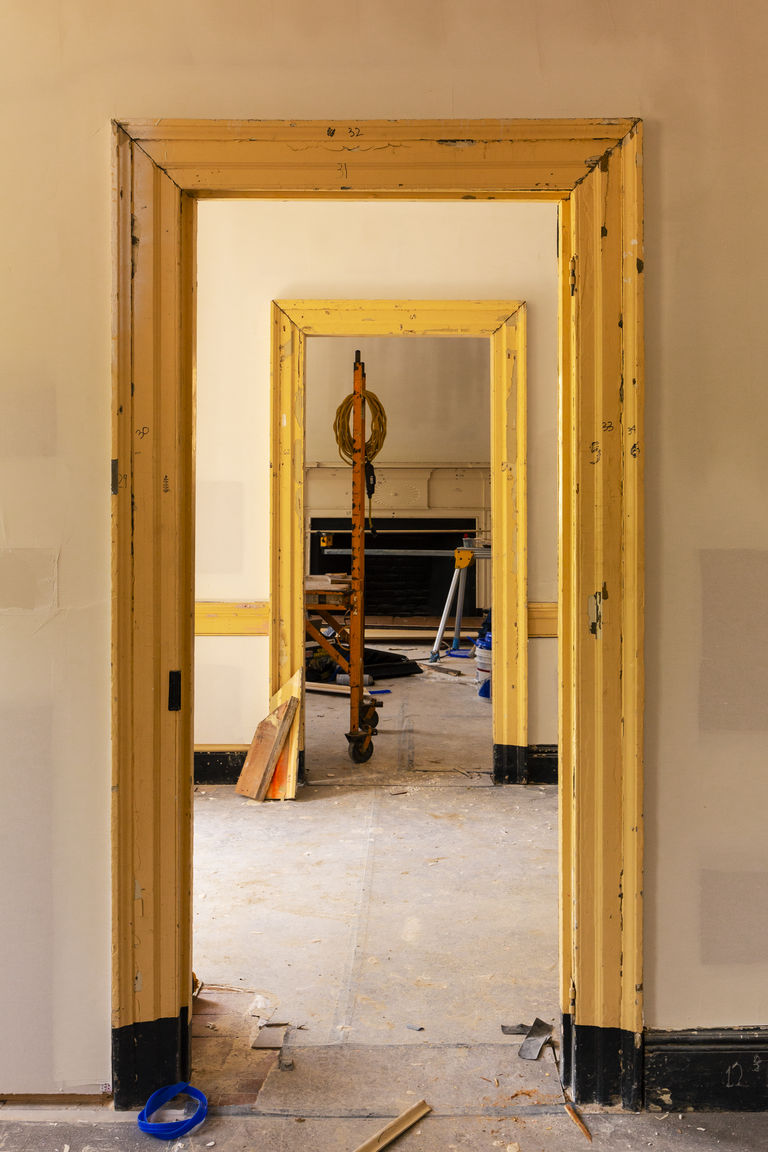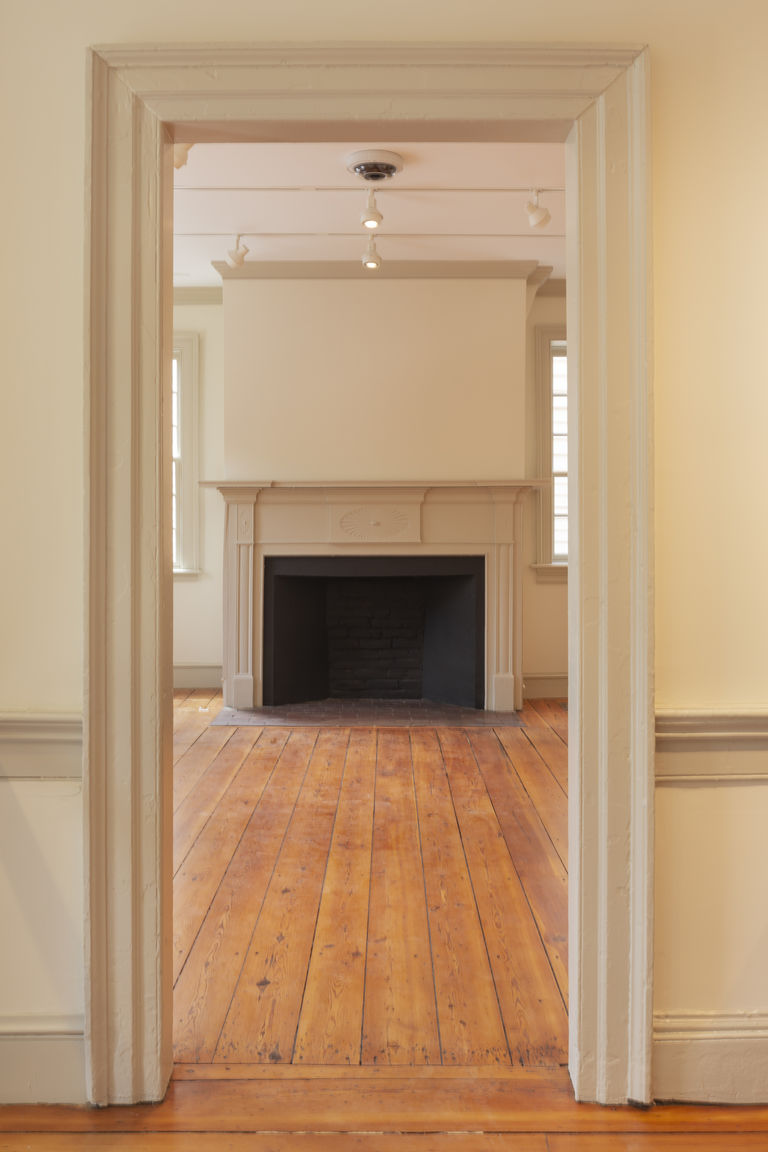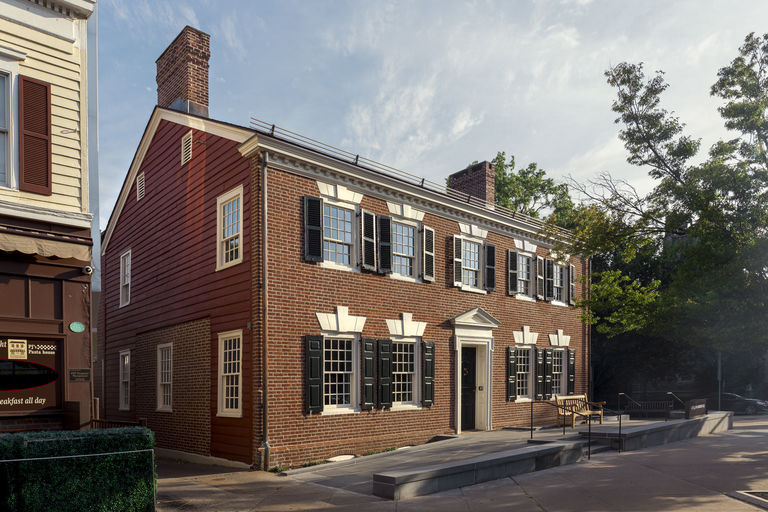History of Bainbridge House
Lovers of Princeton history recognize Nassau Street’s storied number 158, known as Bainbridge House, as one of the few remaining eighteenth-century structures in downtown Princeton. A partnership between the Princeton University Art Museum and Princeton University preserved and restored the building, which in 2019 returned to service as a compelling public venue. Known as Art@Bainbridge, the building now features a ground-floor gallery space for installations curated by the Art Museum.
The origins of Bainbridge House date to 1766, when Job Stockton (1734–1771)—a wealthy tanner, grandson of an early English settler to the area, and cousin to one of the signers of the Declaration of Independence, Richard Stockton—built it along the primary thoroughfare of the young village. Almost all of the 1766 structure remains, including some of its original wall paneling and its fireplace mantles, doors, and staircase. Designed in the Georgian style, so called for the four British monarchs (George I, George II, George III, and George IV) who reigned between 1714 and 1830, Bainbridge House is notable for its symmetry and restrained ornament as well as its storied history. Perhaps its most important moment in history came when it was made available as lodging for members of Congress in 1783. In June of that year, American troops had surrounded the State House in Philadelphia, demanding back pay and the resolution of other grievances. Although the mutiny was short-lived, Congress President Elias Boudinot quickly adjourned and reconvened the Congress in Princeton, where he had family and professional connections. Bainbridge House is thus one of a handful of structures that stand as silent witnesses to that brief moment when Princeton and Nassau Hall served as the capital of the young nation.
Bainbridge House also had a role to play in one of the few surviving narratives of the life of an enslaved person in Princeton—a man named Prime—and his successful battle for freedom. Absalom Bainbridge leased the house from the Stockton family and made it his primary home and medical office from 1774, during which time he owned Prime. Bainbridge left New Jersey and joined the Royalist cause as a surgeon for the British army, and his property, including Prime, was later confiscated by American officials. With the hope of gaining manumission, Prime joined the Revolutionary Army; he ultimately became one of three enslaved New Jersey men freed by act of the state legislature as a reward for military service during the Revolutionary War.
Izzy Kasdin, executive director of the Historical Society of Princeton and a member of the Art Museum’s Community Leadership Council, has written that Prime’s “is a story of remarkable perseverance, one that should figure as prominently on Nassau Street as the name of his master.” Indeed, the name of the house comes from the Bainbridges, to honor Absalom’s son, William, who was born and lived there briefly from 1774 to 1777. After the Revolutionary War, Absalom settled in New York City, and young William trained as a seaman. He would go on to serve in the US Navy under six presidents, beginning with John Adams, eventually taking on the role of Naval Commissioner.
Later, Bainbridge House became a boarding house for Princeton University students in the nineteenth century, and the University has owned the building since 1877. In the twentieth century, the house served as a vital center for the community, first as the Princeton Public Library for more than fifty years. From 1967 until 2015, Bainbridge House was home to the Historical Society of Princeton, which left in late 2015 to concentrate its activities at Updike Farmstead. The Art Museum is honored to continue this historic structure’s tradition as a warm and welcoming amenity for the community.




